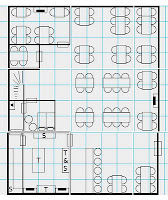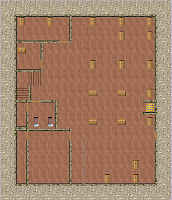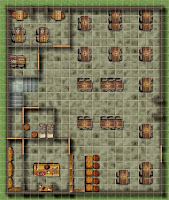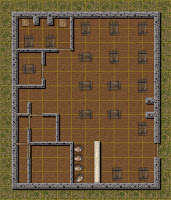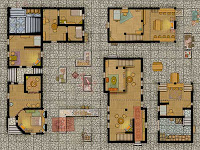E is for Elric of Melniboné (it's mel-nib-o-nay not mel-ni-bone)
 |
| Stormbringer RPG on eBay |
The Novels
My fondest memories were of my school mates and I swapping the London Panther editions in the playground like kids do today with XBox games.
- Elric of Melniboné (1972) - Where Elric, the 428th Sorceror Emperor of Melniboné and he discovers the runeblade "Stormbringer" from which he derives power and vitality.
- The Sailor on the Seas of Fate (1976) - Forced to flee Melniboné, Elric journeys across the sea and learns his fate, to become the Eternal Champion.
- The Weird of the White Wolf (1977) - Where Elric returns to Melniboné with his companion Moonglum and confronts the usurper Yrkoon.
- The Vanishing Tower (1977) - Where Elric turns mercenary sorceror
- The Bane of the Black Sword (1977) - Introduces the love of Elric's life Zarozinia and sets up the events of Stormbringer
- Stormbringer (1965) - Elric must confront the Sorceror King of Pan Tang, Jagren Lern, who has allied himself with the Lords of Chaos in an epic final battle.
Elric is one of the many incarnations of The Eternal Champion, a hero who exists in all times, universes and dimensions who is charged by Fate to defend the cosmic balance between the gods of Law and Chaos. Other incarnations being Doriam Hawkmoon, Corum Jhaelen Irsei, Oswald Bastable and of course Jerry Cornelius.
The RPG
With all this rich source material and an established fan base it was an obvious move to publish an RPG based on the books, which Chaosium promptly did in 1981 with the release of Stormbringer. This then led to a small (in relative terms) collection of sourcebooks, modules and expansions.
The Miniatures
When Games Workshop began distributing Stormbringer for Chaosium one of the first things they did was to make a set of miniatures. The Eternal Champion range was quite extensive and, beyond the boxed set of hero characters, featured Melnibonéan infantry and cavalry and Pan Tangian infantry, and tiger handlers.
 |
| (Top: L to R: Corum Jhaelen Irsei, Elric Kinslayer, Elric of Menibone, Erekose) (Bottom: L to R: Jerry Cornelius, Moonglum, Count Ulrik Skarsol, Duke Dorian Hawkmoon) |
The Music
 |
| Buy it from eBay |
This lead to the album "Chronicles of the Black Sword" based largely on the Elric Saga, the notable exception being the track "Needle Gun" which is based on Jerry Cornelius another work by Moorcock and another incarnation of The Eternal Champion.
Tracklisting
- "Song of the Swords" (Dave Brock)
- "Shade Gate" (Harvey Bainbridge)
- "The Sea King" (Huw Lloyd-Langton)
- "The Pulsing Cavern" (Bainbridge, Alan Davey)
- "Elric the Enchanter" (Davey)
- "Needle Gun" (Brock)
- "Zarozinia" (Brock, Kris Tait)
- "The Demise" (Bainbridge, Brock)
- "Sleep of a Thousand Tears" (Brock, Michael Moorcock)
- "Chaos Army" (Bainbridge, Brock)
- "Horn of Destiny" (Brock)



